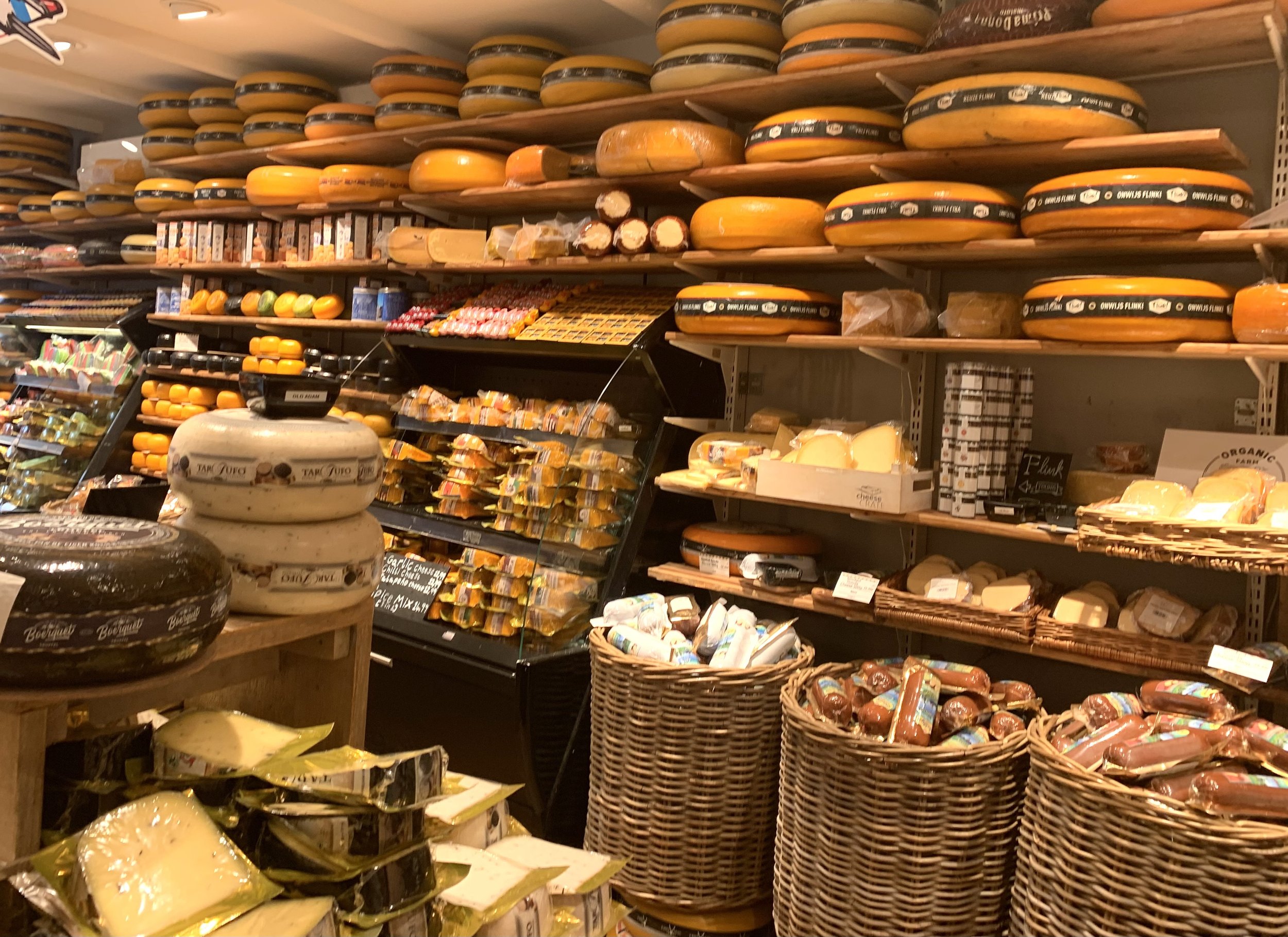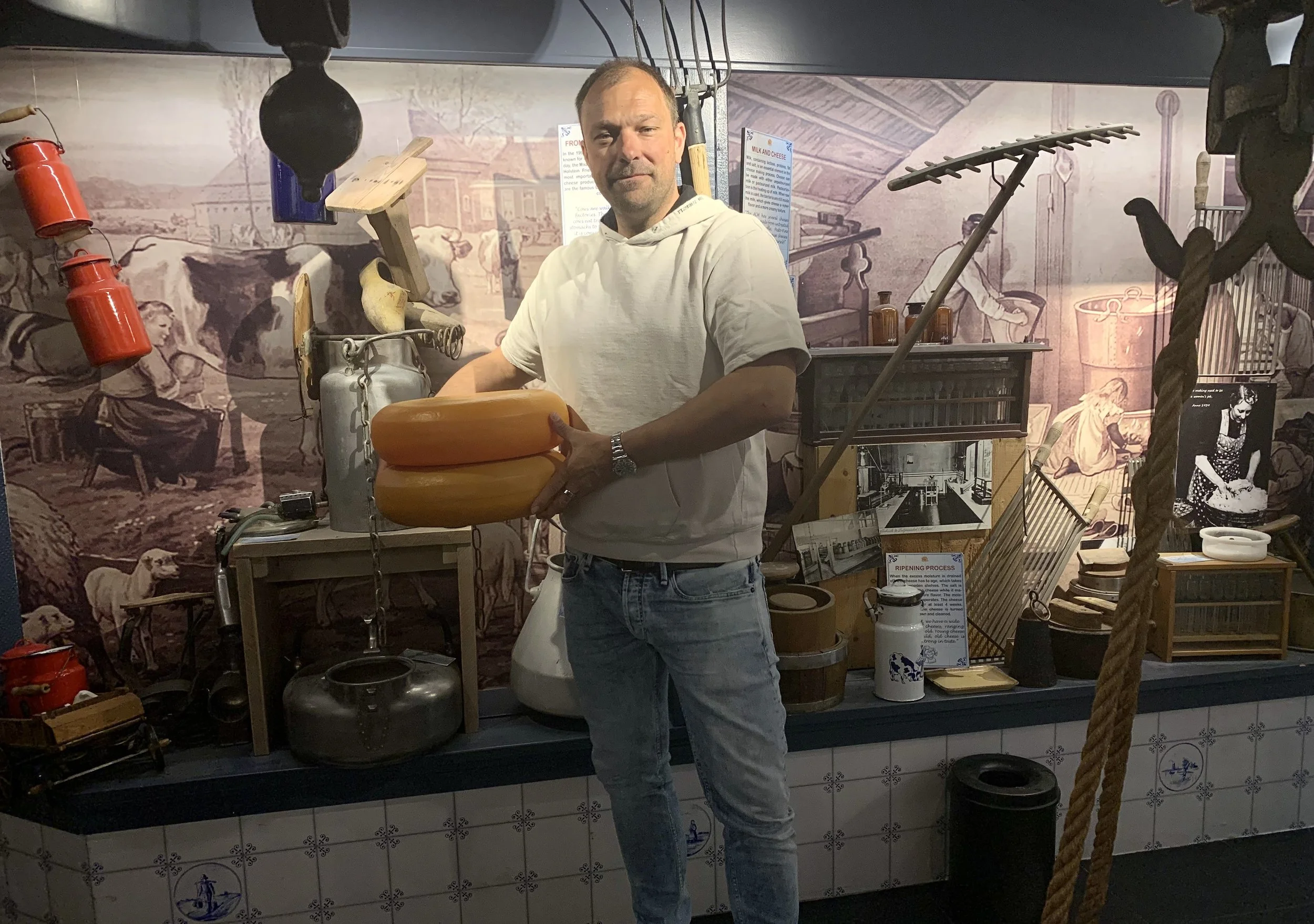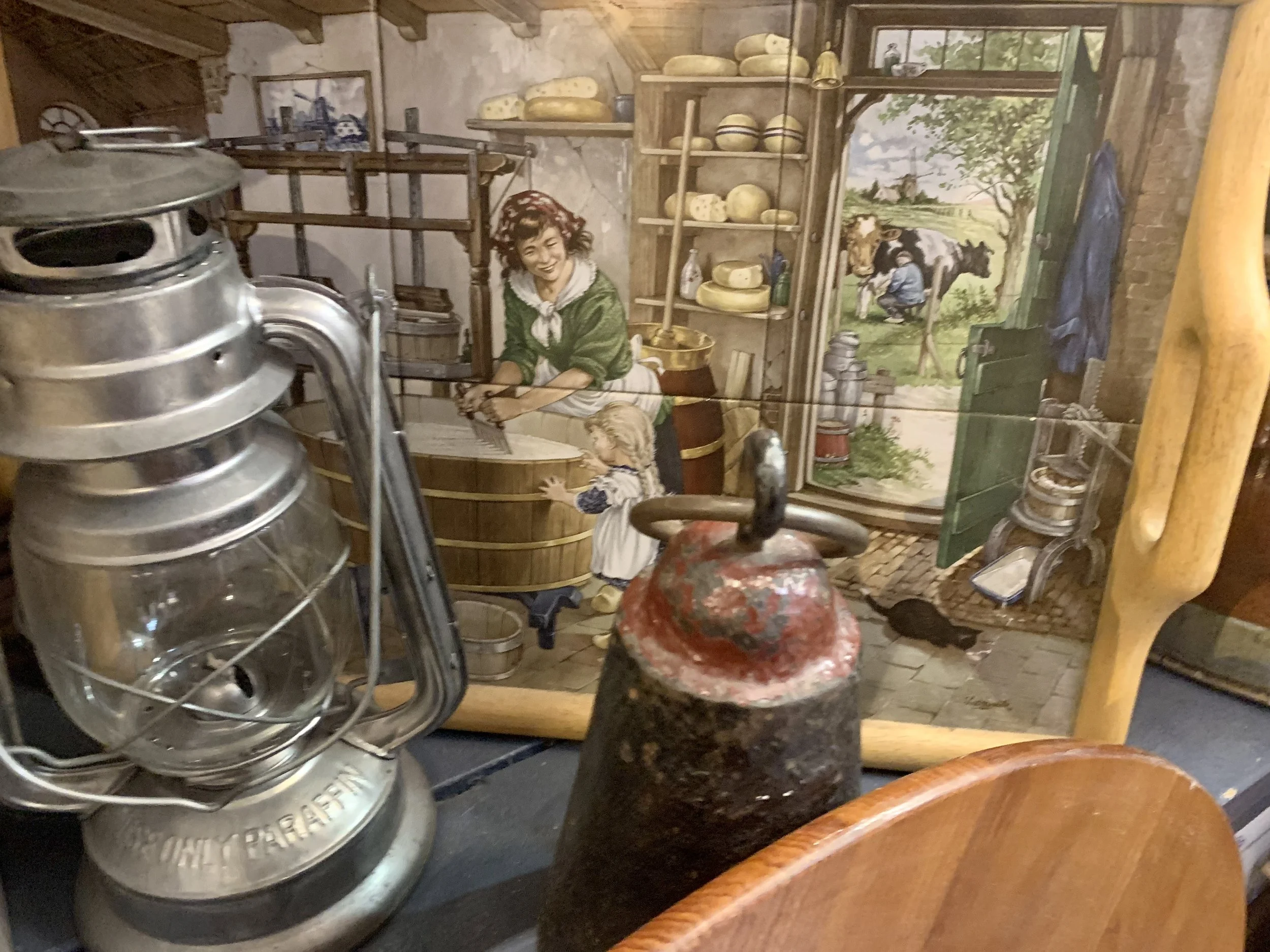Explore Cheese History at the Amsterdam Cheese Museum
Fully stocked shelves photo credit Anna Mindess
Did you know that the huge scales which weighed cheeses in the town centers of 17th century Europe were also used to weigh women to see if they were witches? (Since witches ride on broomsticks, it was believed that they had to be relatively light). If you want to see an actual antique cheese scale and enjoy free tastes of a score of Dutch cheeses, head to the Amsterdam Cheese Museum.
History of the Amsterdam Cheese Museum
Edwin Seggelink photo credit Anna Mindess
Edwin Seggelink, who has been a cheese monger for 22 years and owned six shops, opened the museum 11 years ago, at the request of the folks from the Tulip Museum next door to pair two of the Netherlands’ most popular attractions.
The combination shop and museum occupy a compact building dating from 1600. When you enter, you will be surrounded by shelves full of cheeses and friendly workers who offer a plethora of tiny tastes of cheeses such as Gouda and Edam, made with cow, goat, or sheep milk, with added flavors such as truffles, cumin seeds, fenugreek, whiskey, beer, garlic, and chili.
Ancient Artifacts
Head down the narrow stairway to the floor below for the museum, filled with artifacts that are at least 200-300 years old. “Here’s a 400-year-old simple wooden milking stool,” says Seggelink on our little tour. “Ladies always made the cheese and did the work of milking, while the men were in the field with the cattle. Making cheese is a hard profession, they worked 16-18 hours a day.” He went on to describe and demonstrate a few innovations that eased dairywomen’s work. The old way was to sit down at each cow, wearing wooden shoes, of course, then get up and move your stool and jug to the next cow. (And if the jug fell over, you would lose all your work.) So, 150 years ago, someone invented a stool with a spring on the bottom and a leather strap so that the dairywomen could wear their stools and move them quickly to the next cow; also jugs with large bases that make them spill-proof.
Scale for cheese or witches photo credit Anna Mindess
Next, we looked at the huge scale that did the double duty of weighing cheeses and potential witches. Why were there these huge cheese scales? Since farmers didn’t have their own scales, they all came to use these big ones in the market square in the center of town. The first city to have such a scale was Gouda, and that’s why the cheese was all called Gouda too. “This cheese scale is from 1649 and is the second oldest one in the Netherlands,” says Seggelink. “The oldest one is from 1647 and is in the largest cheese museum in the Netherlands in the city of Alkmaar. They furnished us all these antiques, including a giant cheese press from 1870, that was probably given as part of a dowry.”
Why Cheese in Holland is Really Gouda
History of cheese in Holland photo credit Anna Mindess
“We’ve been making cheese in the Netherlands since 800 B.C.,” he said proudly and added that next year, they plan to redecorate and upgrade the museum, adding QR codes for even easier access to this historical information.
Seggelink explained that since the Northern part of Holland is close to the sea, the high sand level makes the grass saltier, which is better for the cows, and they give creamier milk. “That’s why Northern Holland cheeses are better and the most expensive cheeses you can get.” “Gouda” is really a way of making cheese, he explained and the way you age gouda cheese is the most important thing, either making it young and soft or harder and more flavorful. “We’re featuring 20 different kinds of cheese now, but we could have 150 different cheeses tomorrow. It all depends on different areas, different grass, different farmers, different cows, different milk, different taste.”
Entrance to the museum and cheese shop is free, as are the complimentary tastes. All the cheeses are vacuum sealed, can be brought home, and will last six weeks without refrigeration and six months in the refrigerator.




